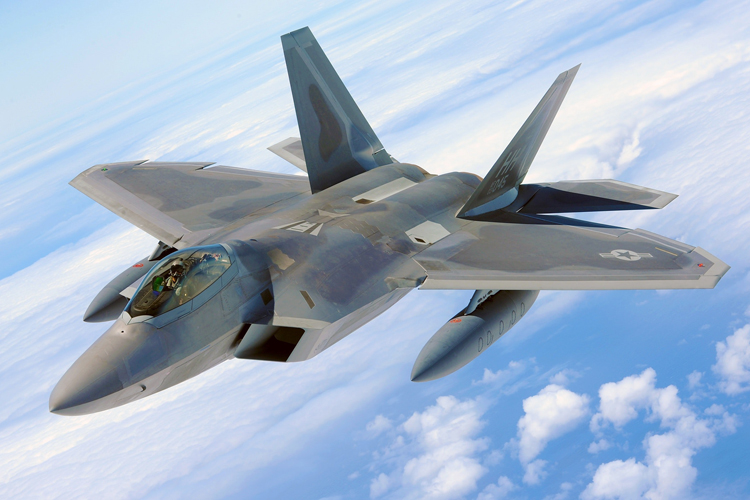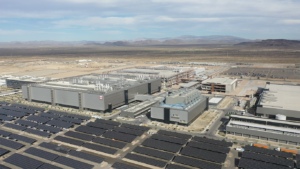Residents of the West Valley, often hear “the sounds of freedom” emanating from above. The audible and visible signs of F-35 training missions represent just part of the ongoing legacy of Luke Air Force Base. In addition to being home to F-35s, Luke AFB also houses F-16s, 4,300 active military personnel, 1,300 reserves, and 1,300 civilians. Together, the moving parts of Luke AFB contribute a game-changing $2.4 billion in annual economic impact to the local community — the economic impact equivalent of hosting five Super Bowls a year.
“For over 70 years, Luke has trained the world’s greatest fighter pilots and combat-ready airmen,” says Brigadier General Todd Canterbury. “As we build to hosting 144 of the world’s most advanced fighters, the F-35, Luke will continue this legacy for years to come. We look forward to continuing to grow with the West Valley.”
While many are aware of the tremendous economic impact of Luke AFB, perhaps less highlighted, is the gaining traction of Luke AFB’s talented transitioning military. While Luke has — and continues to — pump dollars into the West Valley, it’s also part of a valuable, skilled workforce pipeline.
“More than 500 military members transition from Luke Air Force Base annually,” explains Steve Yamamori, president and CEO of the Reveille Foundation. “And, depending on opportunities for employment, roughly 50 percent would consider staying in the West Valley.”
Talented transitioners
Part of why talented transitioning military remain in the West Valley is attributed to government, municipal, and public support.
“I remember going out to Luke Air Force Base as a young boy,” says Glendale Mayor Jerry P. Weiers. I was mesmerized by the aircraft and the entire operation, and I am extremely proud that it has grown into the world’s largest Air Force base right here in Glendale. For decades, Luke Air Force Base has trained our country’s greatest fighter pilots and has also welcomed foreign partners like Norway, Italy, Taiwan, Singapore, Australia, and others.”
In fact, Luke AFB currently trains 75 percent of the world’s F-35 pilots. This means the West Valley is in a unique position to showcase itself to a broad audience. During their training, international military pilots plant temporary roots all over the West Valley, settling in communities like Estrella Mountain Ranch, Vistancia, and Verrado, among others.
“The ability to train with our allied partners from around the world helps build closer relationships with potential coalition partners in future conflicts around the world,” says James “Rusty” Mitchell, Luke Air Force Base’s director of its Community Initiatives Team. “Having partner families in our community exposes them to the unbelievable support that surrounds the men and women at Luke AFB. It also helps our families become more familiar with the Partner Nation’s customs and courtesies that would otherwise not be possible.”
And, while basing training for the F-35 — the nation’s newest and most advanced weapon system — at Luke, it ensures the continued economic contributions of Luke AFB for the next 50 years. That also means the prospect of a critical mass of talented Luke AFB military members transitioning into the West Valley Workforce remains positive.
Added incentive?
Despite the optimistic expectations that 50 percent of the talent will remain in the West Valley after aging out of service at Luke AFB, many West Valley economic developers, along with city, community, and government leaders continue to ask: “Can we do more?”
What can be done moving forward to entice Luke AFB transitioning military to remain in the West Valley?
“We did a survey for our airmen and the four prominent things that came up were job opportunities, education, cost of living, and relationships,” says Colonel Robert A. Sylvester, commander of the 56th Mission Support Group at Luke Air Force Base.
“Transitioning out of the military can be a difficult process,” Yamamori says. “Individuals are coming from an environment that directs them where to go and what to do for their entire careers and suddenly, they are expected to be self-starters and know how to navigate the community.”
“We have many opportunities to let our airmen know what’s available locally,” Sylvester adds. “They include Luke Air Force Base Airman & Family Readiness Center Employment Hub Facebook page, with over 600 followers, averaging six job posts a week; several job fairs with 72 employers and five public agencies; a job bank with 800 members; and twice-monthly employer panels with transitional assistance.”
Of the ad hoc hiring opportunities available, Sylvester points to Chewey, Lyft, Border Patrol, USAA, Kingman PD, Discover, Boeing, SHRM, Lockheed and Amazon that have become amazing employers to former military members.
Additional resources include the Reveille Foundation, which helps to increase both awareness and opportunity.
“Reveille’s vision is to create better, faster pathways to success for all underserved populations, no matter where they begin their journey,” Yamamori says. “Our goal is to take the wonderful work that is being done at the West Valley Military and Veteran Success Center and bring these resources throughout Maricopa County.”
Supportive environment
In addition to programs and foundations that bridge the gap between military service and the civilian workforce, continued community and government support, combined with incentives, offer additional reasons to keep exciting military personnel in the West Valley.
“The West Valley and the state are very welcoming to military personnel, both still serving as well as those that are ready to transition from the military life to the civilian workforce,” Mitchell says. “Led by Gov. Doug Ducey, the elected officials of Arizona have made it very clear that the state welcomes military personnel and their families to remain as residents. The Legislature has pursued tax incentives to further attract military personnel and make it easier to call Arizona home.”
While the talent emerging from Luke is largely comprised of trained pilots and maintainers primed for work in airlines and engineering positions — such as those available at Lockheed Martin — the potential to fill in additional employment needs is plentiful.
For their part, West Valley economic developers and partnerships — such as those cultivated in WESTMARC — are aggressively continuing to tempt employers who could benefit from the talent pool at Luke AFB and persuade them to plant roots in Maricopa County.
“Everyday acknowledgment of the sacrifices made by the military personnel stationed in Arizona is very impactful,” Mitchell says. “Every airman in today’s Air Force joined knowing that that they were going to be placed ‘in harm’s way,’ and yet they raised their hand to serve. A pat on the back and a simple thank you goes a long way.”




